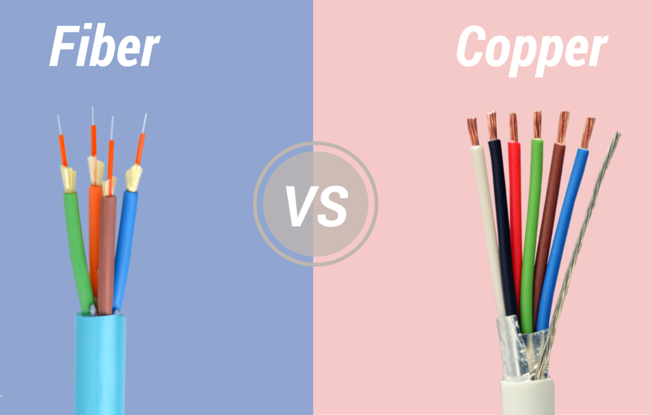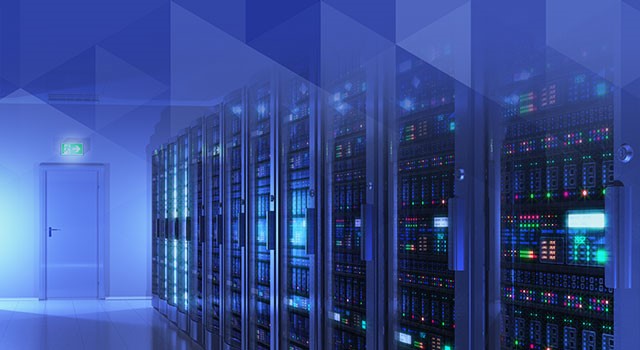Hybrid clouds usage and popularity are increasing every passing day. And, the reason is not surprising at all! Hybrid cloud is introducing a new technological system to businesses enabling them to perform better. It’s enhancing their cloud capabilities by allowing them to migrate apps and share data across multiple clouds.
What is it?
To start with, incorporating services from the public cloud, private cloud, and on-premises infrastructure makes up the hybrid cloud.
It delivers management, automated configuration, and portability of applications across the public and private cloud networks and on-premises infrastructure.
How Does A Hybrid Cloud Work?
It combines the functions of both public and private clouds to give its users a better overall experience.
It works by combining the infrastructure of local data center assets with resources of public and private clouds.
It’s modern architecture focuses on enhancing the workload’s portability throughout the cloud environments.

6 Benefits of Shifting To A Hybrid Cloud
Consider the following six main benefits of shifting:
1.Increased Productivity
Firstly, through it, productivity level increases. Consequently, organizations can quickly adopt different methodologies, such as agile methods.
2. Efficient Infrastructure
Secondly, hybrid clouds provide extra control. Hence, the infrastructure becomes more efficient.
3. Accelerated Business
In addition, it gives a boost to all businesses by accelerating innovation.
4. Improved Security
With its help, compliance regulatory and overall security across the entire organization is enhanced.
5. Saves Time
Moreover, by accelerating every area of work, it saves quality time. So, all products, services, and applications are delivered at a faster pace.
6. Flexibility
Last but not least, It makes organizations more flexible in their work.
3 Drawbacks of a Hybrid Cloud
Besides the vast list of advantages, there are three drawbacks, as mentioned below:
1. High Investment
High investment is needed to develop an enterprise cloud.
2. Bottlenecks
The transmission of data across public and private clouds often results in network bottlenecks.
3. Cloud Compatibility
This issue is mainly related to its infrastructure. As a result, it can decrease the overall performance level of the system.
Conclusion: Should You Shift?
In conclusion, It is trending in every IT department. It is highly efficient in increasing the agility of IT teams. Among all cloud environments, Hybrid cloud leads the list of best deployment models.
According to 2019’s Enterprise Cloud Index, 85% of companies chose a hybrid cloud as IT’s ideal operating model — another reason to shift to a hybrid cloud.
So, if you are ready to make a shift, check out the best deals for hybrid cloud services by AiNET — experience hybrid cloud’s tremendous advantages and success for your business.
How Fiber Network Benefits Businesses?
In today’s business environment, an internet connection is the backbone of all sorts of communications. You install advanced tools and technologies to scale up your operations. But without fast and reliable network support, all your efforts will go in vain.
As consumer behavior and operational methods continue to evolve, you must go for a solution that helps you keep up with the pace. A fiber optics network provides you the required agility and scalability that is absolutely necessary for today’s highly competitive environment. Here we discuss three advantages of using a fiber network for your business.
1. Fiber networks mean faster connection
A sluggish internet connection impacts both your internal productivity as well as consumer relations. Time is money, quite literally so. Imagine your employees need to wait for 10 minutes to upload a large file to the system. That means those 10 minutes are lost from their working hour. Besides, a slow internet connection distracts the employee, who would otherwise be focused on their work. Studies have shown a fast network connection can significantly improve one’s performance at work.
The speed of your internet connection can be even more critical if you run a consumer-focused business. A longer response time leads to poor customer service. People expect an immediate response. If you fail to get back to them in time, some others will, and you will lose the customer to your competitor.
The fiber network is the most advanced technology that uses flexible, transparent fibers made of glass or plastic. These fiber optics cables transmit data signals in the form of light. This is, by far, the fastest way to transfer data. To stay relevant in the market, you must opt for this technology if you already haven’t.
2. Fiber network offers symmetrical speed
Symmetrical connection means the equal upload and download speed. Even a decade back, it wasn’t a necessity. Because in the past, we would mostly download files from the internet and seldom upload them. But things have changed fast. Now we are uploading files all the time. Have you ever wondered why it takes so long to upload a file while downloading speed is pretty high? It’s because the traditional internet connection relies on a faster download speed and slower uploading. It was designed at a time while the upload speed was not so important for general users. Fiber technology is created to satisfy today’s needs. With the fiber network’s symmetrical bandwidth capabilities, you can upload and download the file at the same speed. A Symmetrical connection offers an improved cloud experience too.
3. Optical Fibers are Cost-effective
The initial installation may seem costly. However, over time you will benefit much more than you invest. It saves you a significant amount of money by optimizing the productivity of your team. Besides, the maintenance cost is far less than other broadband connections. As your business grows, you may need to upgrade your connection. With a fiber network, you won’t need any additional hardware equipment to scale up the bandwidth. You just need to ask your service provider, and they can do it remotely. A fiber network also lets you migrate your IT infrastructure to the cloud. Once you start operating on the cloud, you can save money on server, power, and human resources.
Considering fiber network for your business? AiNET provides top-notch fiber network connections in Baltimore and Washington DC area. Let us know your requirement, and we will customize the networking solution for you.
What Is Fiber Optic Network?
Data connections carried by cables with plastic or glass fibers are known as fiber optic network. Data is transmitted through them as beams of light pulsing in patterns. Compared to regular cables, fiber optics are almost twenty times faster.
How Does It Work?
Fiber optic web works by dividing documents like films and games into information bundles of zeroes and ones. A laser streaks this Morse code-type signal into one finish of a plastic or glass fiber. The “wire” is probably just about as thick as one strand of human hair.
A unique sheath called a cladding keeps the light emission inside the fiber. It bobs off the dividers to the extent of 60 miles and jumps out the opposite end where a modem disentangles the light into a structure your PC can utilize.
Types of Fiber Optic Cable Internet
FTTP or FTTH
Fiber to the home or premises. The fastest, most reliable form of optic connection.
FTTC
Fiber to the curb. The fiber utility pole gets setup outside your house.
FTTN
Fiber to the node or neighborhood. The fiber optics get to within a range of one mile of your house.
Advantages of Fiber Optic Internet Speed
Fiber optic web speed is 1 Gbps. That is 10 to multiple times faster than the 50 to 100 Mbps link the majority of us know now. For a substantial fiber optic versus satellite web speed correlation, see the rundown beneath. It shows what amount of time it requires to download a 2-hour film on fiber optic versus satellite web.
- Fiber optic 1 Gbps: 40 seconds
- Cable internet 100 Mbps: 7 minutes
- DSL 25 Mbps: 30 minutes
- 4G LTE 35 Mbps: 25 minutes
- 5G internet 10 Gbps: 4 seconds
Reliability
We all require a stable, fast internet connection- but the traffic makes it hard for us to reach the desirable internet speeds. This is where the fiber optic technology comes in. Fiber optics can handle more data and users with a stable consistency, hence proving far more reliable. Various service providers like AiNET provide most fiber network services.
If you wish to opt for fiber optic services, visit AiNET to avail the best fiber optic network and cloud storage services.
Data sprawl is a real menace of our time. Your business collects, processes, and stores a vast amount of digital data every day. To run your business operations efficiently, you must know what data you have, where it is stored, and who has access to this data. Without a comprehensive data management policy in place, the chances are, at some point, you will start losing track of your data. This situation is called data sprawl.
How data sprawl affects your business?
We tend to store our data on a variety of endpoints and servers. Sometimes we save them locally on the hard drives; the other times, we use a public cloud. Additionally, your employees may work on their own devices and store them on their local drive.
When the data is in use, all the concerned people know where it is stored and how to access it. But with time, it becomes challenging, even for the most efficient employees, to track the data. So, in the future, if you need to access the data, you and your team will be clueless about where to find it.
Data sprawl not only affects the productivity of your team but can also pose a threat to security. Your ex-employees may have access to the information they shouldn’t have, or one of your employees might get hold of a confidential document. It happens all the time when an organization experiences data sprawl.

How to prevent data sprawl?
Only a well-planned data management policy can stop data sprawl. You can take a few steps to have greater control over your business data.
The first and most critical step is migrating your data to dedicated cloud storage. When you store all your data on a single cloud space, it is less likely to lose those data. Either get a private cloud, or you may opt for a hybrid model. Train all your employees to save their works on that particular cloud storage and not on some public cloud like Google Drive or One Drive. Besides, integrate the apps into your cloud storage. All these apps will then start saving their outputs on your cloud server.
Service providers like AiNET offer comprehensive cloud solutions. Their specially designed cloud services are suitable for enterprise-class storage and cloud computing.
After moving your data to cloud storage, the next step should be implementing a standard meta-data policy. Everybody has their style when it comes to naming the files or putting the description. It doesn’t help while you are storing business data. Train all your employees to follow a fixed rule while they save data on the cloud. It will be much easier to find a particular file if you know the exact name of the file. You can use automated data discovery and classification software to make things easy.
Also, make it a practice to remove duplicate and redundant data. These data not only occupy the storage space but also create confusion.
If your business is experiencing data sprawl or heading down this path, take the required measures immediately before it’s too late.
When the Romans developed lead pipes some 2000 years ago, they must have been beyond excited with the level of ease it must have caused them.
Moving water through those pipes at that time was indeed an invaluable feat. Now, imagine moving massive digital data through similar technology in nanoseconds.
Network speed has always been an insatiable need since the dawn of the internet. While it remains insatiable, we might have it the highest milestone yet in data connectivity speed, and this is primarily a product of the innovations of fiber network technology.
Fiber network technology is no new science. We have smooth telephone calls because of it, but what’s quite remarkable is how it can significantly improve your Internet speed. This mechanism is known as fiber optics, and here is how it works.
How does fiber optics work?
Fiber optics is the transfer of information via light beams through thin glass cables. Now, that’s a little vague. Let’s dig a little deeper.
In fiber optics, fiber cables carry information. These cables contain optical fibers, glasses drawn so thin that they become almost as flimsy as human hair.
The drawn glasses are the core of the cable, and they’re usually wrapped within a thicker roll of glass or plastic known as the cladding.
The cladding isn’t necessarily a protective gear for the core. It also plays a crucial role by keeping the light that goes through the core sealed inside it.
As you must have guessed, light in this technology is neither an aesthetic factor nor data. The light serves as a data carrier; each beam or light pulse sent through the core contains binary codes.
Binary codes are information represented in ones and zeroes, and a binary code comprises bits organized in patterns known as bytes.
The exciting thing is, a pulse could travel as far as 50 to 60 miles without interference. Optical amplifiers are incorporated into the transmission systems so pulse signals can travel several miles further without degradation or data loss.

In summary, the concept of fiber optics relies on the speed of light to sustain its reputation as the fastest means of data connection in today’s world. You can only imagine how fast your Internet connection would be with the use of fiber networks.
The fastest known record in fiber network connections is 1000 Mbps, approximately one gigabyte per second. Does it get any better than that?
Well, you can enjoy this current peak today. Contact AiNET and let us top up your internet speed with our fiber networks.
I’m sure you, like every business, have information that you do not want to lose. With the right data backup and recovery service, you won’t.
Did you know that more than 50% of startup or medium businesses do not have the right backup plan for themselves? Trust me, you do not want to make the same mistake.
What does backup even mean?
Well, allow me to explain. Any important information you have must be backed up, that is, it must be stored in another place from your primary storage. Why? Well, what would you do in case the hardware that includes your information, files, documents, and important data gets stolen or broken?
Now you know why.
Disaster can strike anytime, and it is your job to be secure with your information and be ready to recover your data.
So, let’s talk about the benefits of Data backup and recovery service. There are many benefits it provides, some of them are:
1. Its easy
Backing your data might sound like a very hard process to do, but the truth is its very easy. All it takes is a few clicks and you don’t need an expert to help you out. Have an IT specialist set up the software and you’re ready to go.
If its both easy and beneficial, why not do it?

2. Its cost effective
Think about all the money you are going to spend to recover the hardware when broken or stolen.
Think about the cost of manually backing your data up every time.
Think about the space and money you have to spend in order to set up a place for your equipment and computers.
You can forget all about these costs once you remotely back up your data. Businesses have hopped on this trend already and it has given them the opportunity to focus on more important things that scale their business up!
3. No more worrying about your data recovery
You are backing your data up for a reason, to never lose it.
Data recovery is much easier when you have already stored your information somewhere other than your primary storage.
Not to forget, all the downtime you experience can be very bad for your business. For every second of downtime, you are losing money. Having your data recovered quickly can enhance your productivity, save you tons of money and keeps your business running smoothly at all times.
Data backup and recovery is a necessity for all companies nowadays, no matter the size. Even individuals with simple files and folders should make sure they have stored their information in a safe and secure environment. Visit AiNET to learn more!
Today, just as an estimation, data produces at a rate of 2.5 quintillion bytes daily. There is absolutely no question to the increasing importance of data. The question arises: where should all this data go? That is where data centers come into play. Companies and individuals alike who own both large- and small-scale businesses have astonishing amounts of data that they need to store somewhere. Let us dive into the storage of the quintillion bytes we use.

What Is a Data Center?
People create data centers, a physical facility, where organizations can house and store their applications and data. This facility has a network of computing and storage resources which enable the delivery of applications and data from one place to another.
They are also the host of cloud storage services. The exponential increase of data forces businesses to use all sorts of data storage facilities. These ‘centers’ are the physical home to all these application delivery controls and servers.
Cloud computing provides you a cutting-edge solution for most of your IT needs. It’s flexible, scalable, and fast. On the other hand, on certain occasions, control over the physical server may deem to be necessary. A hybrid model aims to make the most out of each infrastructure and run your organization seamlessly.
Business and Data Centers
1. Lower Data Storage Cost
Firstly, as businesses grow, so does their data. With the growth of the business, they must consider additional resources and invest in storage systems. This incurs more costs which can be reduced by investing in data centers. Therefore, the major cost of physical hardware can be greatly reduced by the storage you obtain.
2. Safety
Secondly, data centers allow you to get all your stored data completely safe and secure. Always being on high alert, like AiNET, with professional’s support always available to keep all the data secure with maximum security. Your data is stored safely in data centers incase of an unfortunate loss of data. If a company loses their data, the data centers still have your data safe.
3. Efficient Storage Management
Last but not least, they have introduced innovation to store and manage data, pushing the limits of storage capacity. AiNET allows you to store your data in cloud computing facilities. Therefore, businesses will not have to worry about the increasing need for data storage. Cloud computing keeps your storage safe from any theft or loss.
In conclusion, Data centers will solve the problem every entrepreneur faces. The rising demand for storage can be assisted by data centers around the globe.
There are a lot of networking channels, such as copper cables, radio links, and microwaves. However, the only efficient networking, which is cheap, fast, and versatile, is the fiber network.
Copper cables, which are alternatives for fiber networks, are the most acceptable option of all other networking channels. However, fiber cables have numerous advantages. This write-up is all about a comparison between these two types of networks.

What is a fiber network?
Before we dig deep into the comparison, let’s clarify your concept of the fiber network. As copper cables are made up of copper; similarly, fiber cables are made up of glass.
Thin strands of glass with multiple layers of plastic make fiber cables a functional network channel.
Comparison
Security
If you belong to a security-conscious organization, fiber cable will be an ideal choice for you. As the signals are not transferrable outside the wire, fiber cables are rendered secure.
In contrast, copper cables emit electromagnetic waves. These electromagnetic waves can allow hackers to interpret the data flowing inside the cable without even disturbing it.
Versatility
Copper cables need regular upgradation for efficient transmission of data. If you want to transfer data at higher speeds, you have to pay the maintenance costs it will claim over the years.
However, fiber cables are a versatile channel for data transmission. They don’t need constant maintenance or upgradation. They are functional enough to bear large amounts of data transmission.
Covered Distance
When talking about distance, fiber cables are so much better than copper cables. Copper cables can transmit data to a distance of 300 feet only.
On the other hand, fiber cables can transmit data up to 1500 feet. Also, the limit of transmission distance may vary according to the type of fiber cable.
Reliability
Fiber cable is secure from any interference. External factors can’t affect the data transmission. It is why fiber cables are a favorable option for environments with electrical noise.
However, external factors, like noise or light, might affect its functionality.
What to Choose?
Some of you might argue that fiber cables are an expensive option. However, once installed, fiber cables don’t need maintenance and up-gradation as copper cables do. Also, the advantages of fiber cables make them a favorable option for numerous settings.
Want to learn more about fiber networks? Visit AiNET for interesting information.
When a fiber is in use, it has a light pulse being transmitted through it. What do these light pulses do, you ask? Well, these light pulses send data and information from one point to another.
So, what is a dark fiber in that case?
Since fibers that have light pulses in them means that they are in use, it is easy to understand dark fibers, AKA unlit fibers, are simply… unused. They include no service and no traffic on them. These dark fibers are the ones that are already installed in the ground, however although they are ready to be used and be taken advantage of, they are not being used.

But why would you want to add fibers to the ground and then leave it unused?
These unlit fibers are spare pieces of network fiber which are laid on the side in case there is a future need. Do not worry, we will explain more!
The network service providers often overestimate and installs more cables than needed. The reason behind it is because the company wants to ensure they have all the preventative methods and last-minute needs are taken care of.
By preventative needs we mean sometimes growth of data and information takes place. In order for a dark fiber network to not suffer from the overgrowth of it, extra dark fibers are added to the ground.
Apart from being ready for future problems, having extra unlit fiber optic lines have many more benefits such as
- It saves time and is efficient
- It reduces cost
- Provides higher bandwidth capacity
- Ready for any last-minute problems
Dark fibers are also called as black fibers or unlit fibers.
What are dark fibers used for?
You can find dark fibers being used mainly for Telecom and Network Communications. Sure, they can be purchased and used by anyone who is willing to pay. Dark fibers provide extra fast internet for its users. That is why many enterprises and organizations with specific needs benefit from these unlit fibers.
Businesses such as hotels, government and financial institutions, universities, and even online business operators can benefit from these dark fibers. Communication is a must in these businesses, therefore a high speed, reliable and protected data transfers serve as a necessity for them.
We are sure you want to learn more, and we got your back all the way. Visit AiNET and learn more about cloud solutions, data centers, fiber optics and many more!
Technological advancements are becoming incomprehensible as time passes by. This has increased the amount of data substantially, with signs indicating that data will only increase in the coming future. The evolution of technology has allowed us to store data in unique ways, minimizing the space and investment required for individuals and businesses for the storage of their precious data.
Businesses and individuals find it rather hard, expensive and time consuming to always be taking care of storing their data. For businesses it is very expensive to manage and build their own data centers for their data storage. Even for individuals it is rather expensive to buy and manage physical hardware for their data storage needs. This is where data storage services come into play, allowing you to store your data with a third-party owner who manages the data centers completely.
Your data, along with these storage service providers, are safely managed at a certain facility created for one reason, having powerful servers where data can run and be stored. These facilities are known as data centers.
In addition, cloud storage services virtualize it all. Therefore, making it look like your data is stored magically.

Why Are Data Storage Services Important to You?
1. Pocket Friendly
Firstly, investing in physical hardware for data storage has always been expensive. With data storage service providers, it enables businesses and individuals to store their data in almost unlimited amounts on a considerably cheaper margin as compared to investing in your own in-house data storage.
2. Efficiency
Secondly., storing data efficiently can take a lot of time and effort. Data storage services have optimized in storing your data for you to have easy access to it. An individual only needs internet access, and you can access the stored data easily from anywhere at any time. Unique services are provided, allowing you to automate which files go to their designated location
3. Scalability
With storage services such as cloud storage there is almost no limit to the amount of data you can store. This allows you and your business to always have access to storage while maximizing your data and business without worrying about your storage for data running out.
4. Data Backup
Last but not least, technology comes with its drawbacks. This includes the loss of data for any unfortunate reason too. Data storage services allow you to have data backed up at their facilities. The data centers usually have a backup for you. This is in case something happens to your data. It is also much safer (as everything is always efficiently monitored).
To sum it up:
While only scratching the surface with the benefits and reasons why data storage is important, technology and the evolution of data will always force us to seek data storage services. In addition, Ai.NET is an organization which provides you with multiple services for almost all your data needs. Visit Ai.NET for more information on data storage services and much more.










